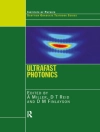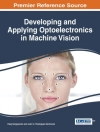Human spaceflight is inherently risky, with numerous potential hazards posed at each phase of a mission. Potential health risks during spaceflights include short-term health consequences from being in microgravity, as well as long-term health consequences that arise, or continue, months or years after a flight. Additional health considerations are risks posed by exposure to environmental contaminants onboard spacecraft. Because the International Space Station and spacecraft are closed environments that require recirculation of air and water supplies, some contamination of the air and water will occur. Even with onboard air and water purification systems, chemicals will accumulate in the air and water as they recirculate or are recycled onboard. Therefore, it is necessary for the National Aeronautics and Space Administration (NASA) to identify hazardous contaminants and determine exposure levels that are not expected to pose a health risk to astronauts. NASA uses spacecraft maximum allowance concentrations (SMACs) and spacecraft water exposure guidelines (SWEGs) to provide guidance on acceptable exposures to air and water contaminants during normal operations and emergency situations. Refinements to the Methods for Developing Spacecraft Exposure Guidelines updates the methods for establishing SMACs and SWEGs and assists NASA with identifying chemicals that need updated SMACs or SWEGs and new chemicals for which these guidelines should be developed.
Board on Environmental Studies and Toxicology & Committee on Spacecraft Exposure Guidelines
Refinements to the Methods for Developing Spacecraft Exposure Guidelines [EPUB ebook]
Refinements to the Methods for Developing Spacecraft Exposure Guidelines [EPUB ebook]
Bu e-kitabı satın alın ve 1 tane daha ÜCRETSİZ kazanın!
Dil İngilizce ● Biçim EPUB ● Sayfalar 64 ● ISBN 9780309390811 ● Yayımcı National Academies Press ● Yayınlanan 2016 ● İndirilebilir 3 kez ● Döviz EUR ● Kimlik 7145045 ● Kopya koruma Adobe DRM
DRM özellikli bir e-kitap okuyucu gerektirir












